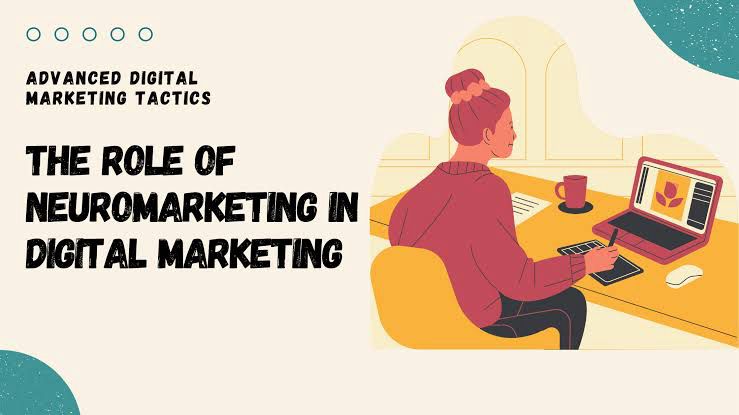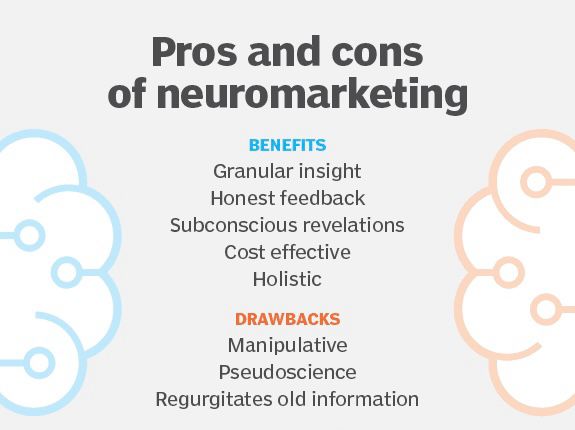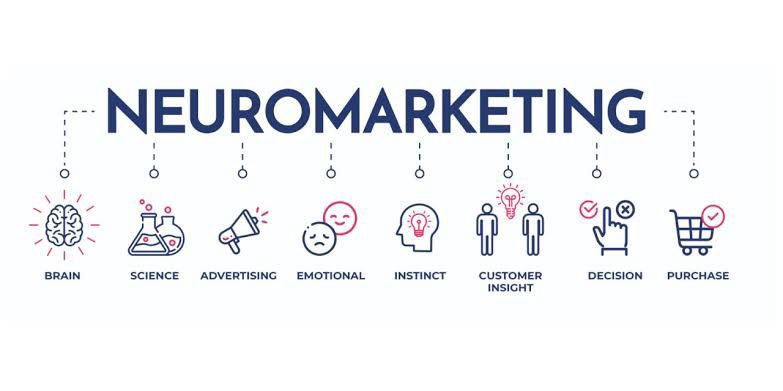Neuromarketing in Digital Campaigns: How Psychology Drives Clicks and Conversions
In the noisy digital world of 2025, attention spans are shorter and competition is fiercer. So how do some brands effortlessly grab attention, drive engagement, and turn casual scrollers into loyal buyers?
The secret lies in neuromarketing—the intersection of psychology, neuroscience, and digital marketing. By tapping into how the brain reacts to visuals, words, and emotions, businesses can optimize campaigns for real, measurable results.
In this blog, we explore how neuromarketing principles can enhance your digital marketing strategy and dramatically increase conversions.

🤯 What is Neuromarketing ?
Neuromarketing is a technique that applies neuroscience and psychology to marketing to better understand consumer behavior. It studies how people respond to marketing stimuli—like headlines, images, colors, and layout—on a subconscious level.
Instead of guessing what works, neuromarketing uses brain science to create content and ads that naturally attract, engage, and convert.

🎯 Why Use Neuromarketing in Digital Marketing?
With users exposed to over 6,000 ads per day, traditional marketing messages are often ignored. But when you appeal to the brain’s emotions, biases, and cognitive patterns, you can cut through the clutter and influence action.
Key Benefits:
• Increase click-through rates (CTR)
• Boost conversion rates
• Strengthen brand recall
• Improve emotional connection with your audience

🧬 1. Emotional Triggers: Speak to the Heart, Not Just the Head
Studies show 90% of buying decisions are driven by emotion, not logic. Neuromarketing taps into emotional triggers such as:
• Fear of missing out (FOMO) – “Only 2 left in stock!”
• Urgency – “Sale ends in 2 hours”
• Belonging – “Join 10,000+ smart marketers”
• Joy – Bright visuals and upbeat tone
Try This:
Use emotionally charged storytelling in ads, emails, and landing pages to create instant resonance.
🧠 2. Cognitive Biases: Use What the Brain Already Believes
The human brain takes shortcuts to make decisions—these are known as cognitive biases. Smart marketers use these to guide behavior:
• Anchoring: Show a high price first, then offer a lower price (makes the deal feel better).
• Social Proof: “4.8 stars from 2,000+ reviews”
• Loss Aversion: “Don’t miss this offer!”
Try This:
Design your pricing tables or product pages to frame value using bias-driven layouts.
🎨 3. Color Psychology: Choose Colors That Convert
Different colors trigger different emotions and reactions. In neuromarketing, this can significantly influence user behavior:
• Red: Urgency and excitement (great for clearance sales)
• Blue: Trust and security (ideal for financial services)
• Green: Growth and health (perfect for wellness brands)
• Black: Luxury and elegance
Try This:
A/B test CTA button colors and background palettes to see which colors convert best.
📸 4. Visual Hierarchy: Guide the Eyes, Guide the Action
Neuromarketing emphasizes eye-tracking research to understand how people visually interact with websites and ads. The brain processes visuals 60,000 times faster than text.
Visual Tactics:
• Use F-pattern layout for text-heavy pages.
• Place CTAs in high-visibility areas (top-right or center).
• Leverage contrast and white space to draw attention.
Try This:
Use tools like Hotjar or Crazy Egg to track where users click and scroll, then optimize layout accordingly.
✉ 5. Personalization: Make It Feel 1-to-1
When people feel that content is tailored to them, they’re more likely to act. Neuromarketing supports personalized experiences that mirror how we want to feel seen and understood.
Personalization Tactics:
• Dynamic emails with names, location, or behavior
• Product recommendations based on previous views
• Personalized landing pages by audience segment
Brands using personalization see 20% higher conversion rates on average.
🔬 Real-World Example: How Netflix Uses Neuromarketing
Netflix doesn’t just recommend shows—it shows custom thumbnails based on your preferences. Love romantic comedies? You’ll see love scenes on the thumbnails. Prefer action? You’ll see explosions—even for the same movie. This is neuromarketing in action.
📊 Final Thoughts: Marketing to the Brain is Marketing That Works
Neuromarketing in digital campaigns is no longer just a novelty—it’s a necessity. The most successful marketers in 2025 are those who understand not only what to sell but how the brain buys.
By leveraging emotional triggers, cognitive biases, and behavioral psychology, you can transform your digital strategy and build deeper, more profitable customer connections.
🧠 Key Takeaways:
• People buy based on emotions, then justify with logic.
• Colors, layout, and language all influence conversion unconsciously.
• Neuromarketing = higher engagement + better ROI
📌 FAQ – Neuromarketing & Digital Marketing
Q1: Is neuromarketing ethical?
Yes, when used to enhance user experience and meet real needs. Avoid manipulation or misinformation.
Q2: Can small businesses use neuromarketing?
Absolutely! Start with small tweaks—like CTA button color or emotionally-driven copy.
Q3: How do I test neuromarketing tactics?
Use A/B testing, heatmaps, and analytics to see how changes affect user behavior.


Leave a Reply
Want to join the discussion?Feel free to contribute!